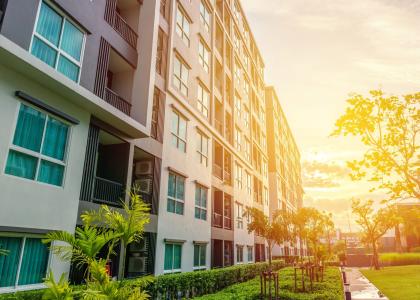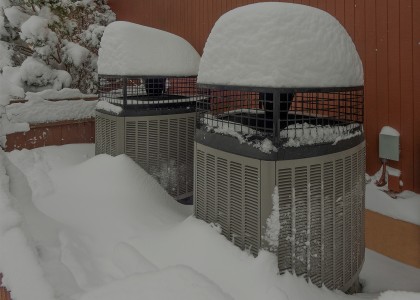Congress should:
- Pass legislation to set energy efficiency improvement targets for building energy codes and compliance rates, and to increase federal assistance (in S. 720 and S. 2012). Advanced residential and commercial model energy codes (2013/2015) have already achieved cost-effective energy savings of roughly 30% compared to a 2004/2006 baseline energy code.
- Authorize and appropriate increased funds for financial and technical assistance to states and local governments for energy code adoption, compliance, and enforcement
- Allow minimum equipment efficiency levels in building codes above federal equipment efficiency standards, provided the code also offers an explicit pathway with equipment at federal minimums that uses other efficiency measures to achieve the savings.
The Issue
ACEEE supports adoption and implementation of energy-efficient building codes at the state, local, and federal levels. In order to meet long-term U.S. energy goals, new buildings should be as energy efficient as is economically justified, since it will be much more expensive to retrofit these buildings after they are completed.
Summary
Advanced building energy codes are a cost-effective way to help consumers save energy and money, make new housing and commercial buildings more affordable, improve comfort, and reduce air pollution. All of these benefits are difficult or impossible to capture if not taken into consideration at the time of construction. There are also additional benefits: codes increase the reliability of utility systems, mitigate harmful environmental conditions such as ground-level ozone and climate change, and boost job creation nationwide.
Buildings use 74% of the electricity and 41% of the total energy in the United States. They are also responsible for 40% of U.S. CO2 emissions. Since buildings have long lifetimes and retrofits can be costly, it is crucial to incorporate energy saving measures during construction in order to achieve acceptable efficiency and comfort.
Building energy codes are legal requirements for the design and construction of buildings. They establish the minimum level of energy efficiency for new residential and commercial buildings and for alterations and additions to those buildings. They improve efficiency by mandating performance through careful construction and proper selection of building components, including wall and ceiling insulation, windows and doors, heating and air conditioning equipment and system efficiency, and lighting power density and controls. To maximize flexibility, most codes offer builders either a prescriptive pathway, which specifies efficiency levels of individual building components, or a performance pathway, based on overall modeled energy use of the building.
Most states use a version of the International Energy Conservation Code (IECC) developed by the International Code Council (ICC), an organization of building code officials. The IECC allows commercial buildings to meet ASHRAE Standard 90.1, jointly developed by the American Society of Heating, Refrigerating and Air Conditioning Engineers (ASHRAE) and the Illuminating Engineering Society (IES).
Model code organizations frequently update building codes to achieve higher levels of cost-effective energy savings. As new codes are finalized, states are expected to adopt either these model codes or their own state-specific equivalents. DOE provides funding and technical assistance to states as well as to the code organizations.
The ICC adopted changes to residential building codes for the 2012 IECC that provide about 30% savings in covered energy use compared to the 2006 edition. Those efficiency levels were maintained for the 2015 IECC while a new energy performance index, similar to the national home energy rating system (HERS), was added as an additional whole-building compliance method. ASHRAE 90.1 has achieved about a 30% savings in whole-building energy use for the 2013 update of its model commercial building code, compared to the 2004 edition. The ASHRAE 90.1-2016 version will achieve further savings.
The building codes provision in S. 720 would direct DOE to set targets for energy savings in future codes, assist the code organizations in developing codes that meet the savings targets, and help states adopt the better codes and achieve better compliance. ACEEE estimates that over the lifetime of buildings built through 2040, this provision would save 2.6 trillion kWh of electricity and 5.6 quadrillion Btu of natural gas (about two-thirds and one-fifth of total U.S. annual use respectively), with CO2 emissions reductions totaling approximately 1.6 trillion metric tons. The policy would also yield significant economic benefits including net customer energy bill savings of $61 billion (net present value).
In addition, Congress should consider provisions to allow higher minimum equipment efficiency requirements in building codes (i.e., levels exceeding federal equipment efficiency standards) provided the code offers an explicit pathway for meeting code levels with equipment just meeting federal minimums (e.g., by including other efficiency measures to make up for the lower efficiency equipment).
For more information
- ACEEE topic page on building codes
- Federal legislation: Portman-Shaheen bill and ACEEE analysis
- Building Codes Assistance Project website
- DOE Building Energy Codes Program website

